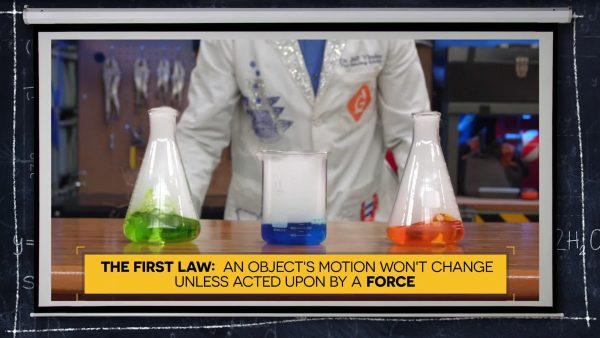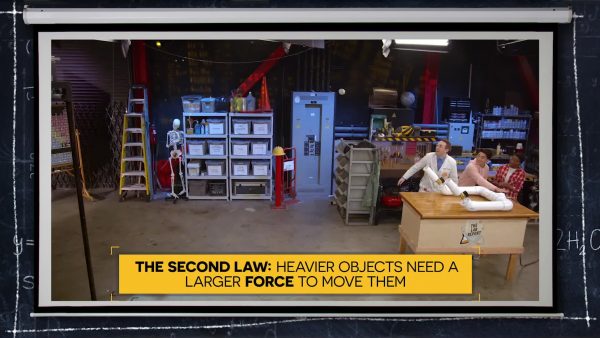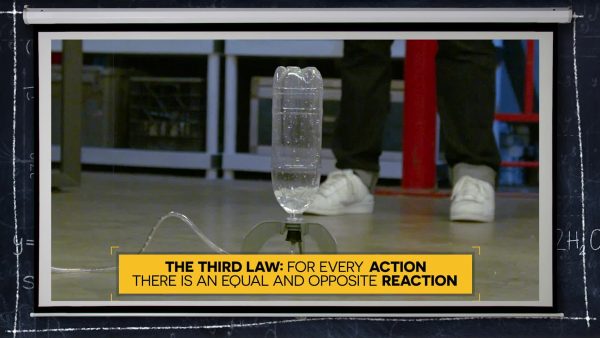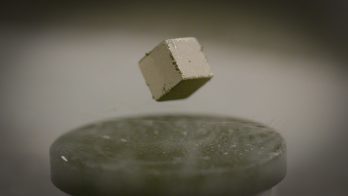There are three laws of motion. These laws were published by Isaac Newton in 1687. Newton’s 1st law tells us that an object won’t change its motion unless acted upon by a force. Newton’s 2nd law tells us that heavier objects need a larger force to move them. Newton’s 3rd law tells us that for every action there is an equal and opposite reaction.
To better understand Newton’s Laws of Motion…
LET’S BREAK IT DOWN!
Newton’s First Law of Motion

Newton’s first law of motion states that objects will continue what they are doing, either staying still or moving, unless they are acted upon by a force. If a ball is sitting still on the grass, it will continue to sit still unless a force, such as a kick from a foot, causes it to move. Likewise, if an object is in motion, such as a rock rolling down a hill, it will continue its motion unless it is interrupted by a force such as a collision with a tree.
Newton’s Second Law of Motion

Newton’s second law of motion states that more force is required to move a heavier object the same distance as a lighter object. Imagine there are two children on a swing set, and one is only 3 and weighs 35 pounds, while the other is 8 and weighs 70 pounds. If their mom pushes them with equal force, the second law of motion says that the heavier child will not go as high as the lighter child. For the heavier child to go as high as the lighter child, their mom would have to push the heavier child with more force.
Newton’s Third Law of Motion

Newton’s third law of motion states that for every action there is an opposite and equal reaction. This can be explained in many observations. Take a rocket for example. A rocket has a force via a chemical reaction that pushes down on the Earth. This results in the opposite reaction of moving the rocket straight up. Another example is a bouncing ball. As it is pushed down onto the ground, it bounces back up with an equal and opposite reaction.
There are several forces we cannot see.

Some forces are not as obvious as pushing and pulling objects. Forces such as gravity, friction, and air resistance all impact the motion of objects. One example of this is when a ball is rolling on the ground. It doesn’t roll forever because the force of gravity is pulling it down, and there is friction between the ball and the ground that works to slow it down. Another example is a feather floating to the ground. The force of gravity pulls it down and the force of air resistance pushes up on it and slows it down.
Many Careers Use Newton’s Laws of Motion

Several different careers use Newton’s Laws of Motion. One example is engineers. Engineers such as crash test engineers use the laws of motion to help them learn how car collisions affect people. This enables the engineers to develop protective technology such as airbags and place them in the right places in cars. Other engineers such as aerospace engineers use the laws of motion when designing airplanes or space vehicles.

































































































































 Select a Google Form
Select a Google Form







 GENERATION GENIUS
GENERATION GENIUS




